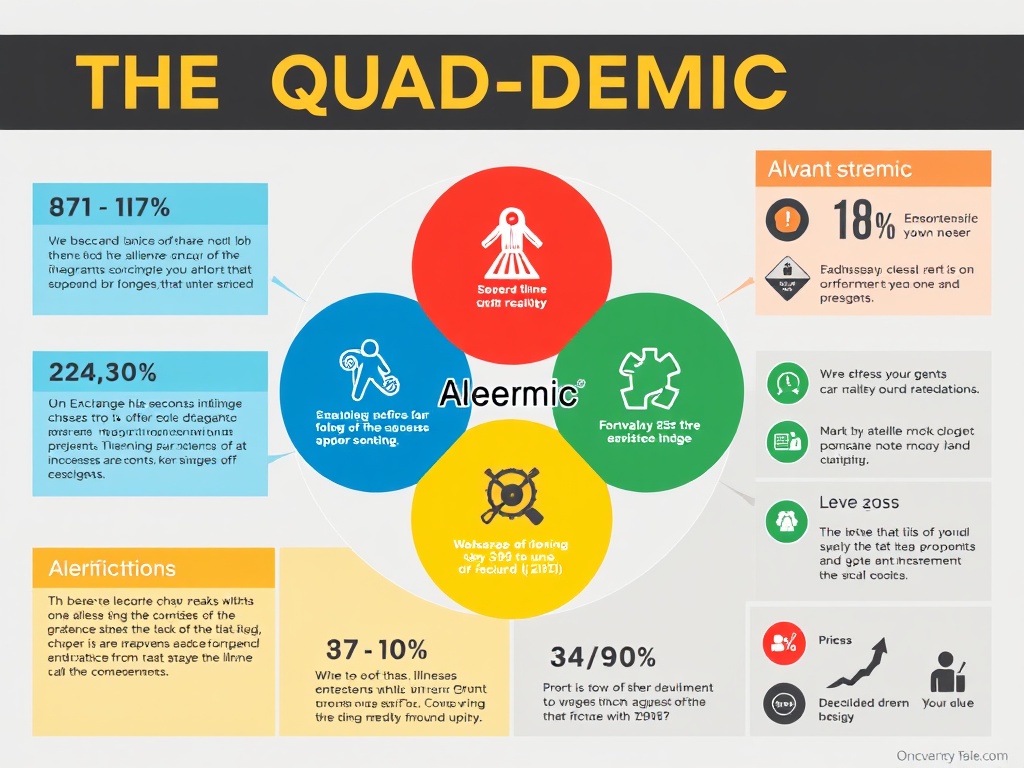How Have We Fared Against the Quad-Demic?

In December, NHS England issued a stark warning that the nation was grappling with a “quad-demic,” a phenomenon where four winter viruses—flu, Covid, respiratory syncytial virus (RSV), and norovirus—were reportedly hitting simultaneously. However, as we look back, it appears that the quad-demic hasn’t quite lived up to the alarming predictions. While forecasts can often miss the mark, should we simply breathe a sigh of relief and move forward, or do the initial claims warrant a more thorough examination?
It is true that there was a notable surge in flu cases this winter, which peaked in January. This pattern is not unprecedented; flu outbreaks of varying severity occur nearly every year. This winter’s flu wave was indeed more pronounced than last year’s, yet it was not as severe as the outbreak two years ago, as indicated by the latest figures from the UK Health Security Agency. The discrepancy between these statistics and various media reports may stem from a peculiar presentation of data by NHS England, which stated that hospital admissions for flu in a particular week were three times higher than in the same week of the previous year. However, such comparisons can be misleading, as they only reflect the timing of this year’s surge compared to last season’s.
What about the other three components of the quad-demic? Fortunately, Covid has remained at remarkably low levels throughout the winter. Despite this, NHS England cautioned that cases were on the rise, even as the numbers merely fluctuated along the lower end of the graph. We are likely to encounter another wave of Covid in the future, possibly this spring, but it is expected to pose minimal risk for most individuals. Current NHS guidelines suggest that we should now treat Covid like other respiratory infections; there is no need for testing unless one is in a risk group, nor is there a requirement for children with respiratory symptoms to stay home from school unless they exhibit a fever.
As for RSV, while there was a surge, it reached its peak in early December. This virus can indeed be concerning for young infants, individuals with compromised immune systems, or those over 75 years of age, but most adults would likely mistake it for a common cold. Norovirus, on the other hand, is more recognizable, typically causing a few days of vomiting and diarrhea. This winter, norovirus levels have been somewhat elevated, but similar to RSV, it primarily poses a threat to those with weakened immune systems or the very young or elderly.
In reality, rather than experiencing a quad-demic, we have simply gone through a standard flu season, accompanied by the usual array of winter viruses. Any flu wave can strain hospital resources, and during peak times, patients have unfortunately had to receive care in corridors. Several hospitals declared critical incidents due to overcrowding, and my sympathies go out to both patients and staff enduring such challenging conditions. However, this does not justify officials implying we are amidst a unique and perilous outbreak of diseases. These viral waves are phenomena that hospital administrators should prepare for, but the general public need not obsess over every fluctuation.
I acknowledge that I am fortunate to be relatively healthy, which influences my perspective. Nonetheless, it seems incongruous for health officials to issue alarming warnings and create a new, disconcerting term for diseases that the majority of people shouldn’t fear. One potential motivation behind this rhetoric may be to encourage vaccination uptake; perhaps health professionals believe a catchy new term will inspire more people to roll up their sleeves. I can’t help but suspect that the narrative of a quad-demic also serves to manage public frustration when patients face inadequate care conditions.
- The issues of blocked hospital beds and a strained social care system are significant contributors to the current strain on healthcare. Nearly 14,000 hospital beds were occupied by patients who were medically fit for discharge but could not leave due to the lack of available nursing home placements.
- In comparison, at the peak of the flu season, only around 5,000 beds were occupied by flu patients, while fewer than 1,000 were taken up by norovirus.
The Government has inherited a social care system that is just as fractured as the NHS. Last year, it announced a delay in major social care reforms for an additional three years, pending yet another report on the sector’s challenges.
Whether or not my theory about distraction holds water, it is ultimately short-sighted for health officials to exaggerate the risks associated with common winter viruses. What will they proclaim next year to escalate the threat level? Perhaps a “quin-demic”? While there are indeed other winter viruses lurking, at some point, the public may simply tune out. If a particularly virulent strain of flu or Covid were to emerge, one that genuinely warrants special precautions, we might find ourselves in a precarious position.
On a broader scale, it is ethically questionable to issue potentially misleading public health warnings based on the belief that the ends justify the means. Such actions can unfairly alarm those who take them seriously, while also leading to skepticism among those who see through the rhetoric, ultimately eroding trust in science and government. In a climate where public trust is more crucial than ever—especially with the recent appointment of a vaccine skeptic as the US Health Secretary—maintaining credibility is paramount.




